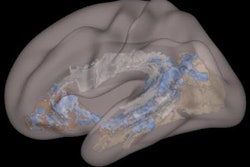Tuesday, December 3 | 11:20 a.m.-11:30 a.m. | SSG05-06 | Room E351
A group from the Mayo Clinic in Rochester, MN, has found that MR elastography can differentiate between two types of liver disease: noncirrhotic and cirrhotic portal hypertension.Currently, clinicians must use invasive means to determine which condition is present. The portal vein carries blood to the liver; if a patient develops cirrhosis of the liver, the portal vein can become hyperextended and normal blood flow is disrupted.
The study, scheduled for presentation by Dr. Sudhakar Venkatesh, included 60 patients with noncirrhotic portal hypertension and 40 age- and gender-matched patients with cirrhotic portal hypertension. All subjects had received MR elastography and MRI scans. The MR elastography protocol included a standard clinical 2D gradient-recalled echo sequence.
The researchers collected data on liver features and signs of portal hypertension and performed an overall evaluation of cirrhosis and portal hyperextension from MR images.
Regions of interest were drawn on the liver and spleen to measure stiffness in both organs, and a receiver operating characteristic (ROC) analysis was performed to determine statistically significant differences.
Venkatesh and colleagues found significantly higher liver stiffness values in the cirrhotic portal hypertension group than in the noncirrhotic patients, but there was no statistically significant difference between the groups relative to spleen stiffness. Based on key ROC parameters, the researchers achieved sensitivity, specificity, and accuracy of at least 98% in differentiating between the two conditions.
Based on the results, the group endorsed MR elastography as an effective noninvasive method for discerning between noncirrhotic portal hypertension and cirrhotic portal hypertension.



.fFmgij6Hin.png?auto=compress%2Cformat&fit=crop&h=100&q=70&w=100)




.fFmgij6Hin.png?auto=compress%2Cformat&fit=crop&h=167&q=70&w=250)











